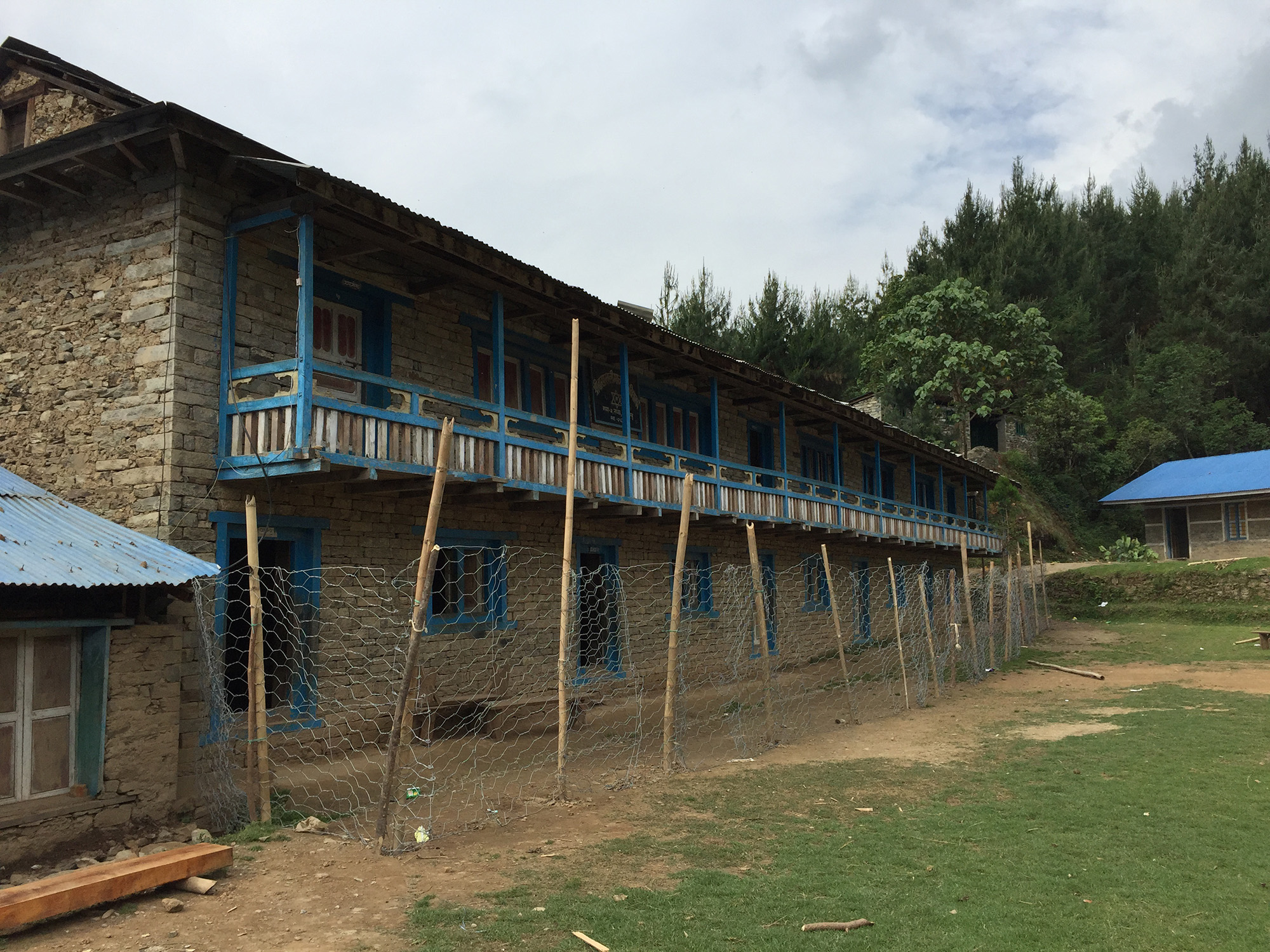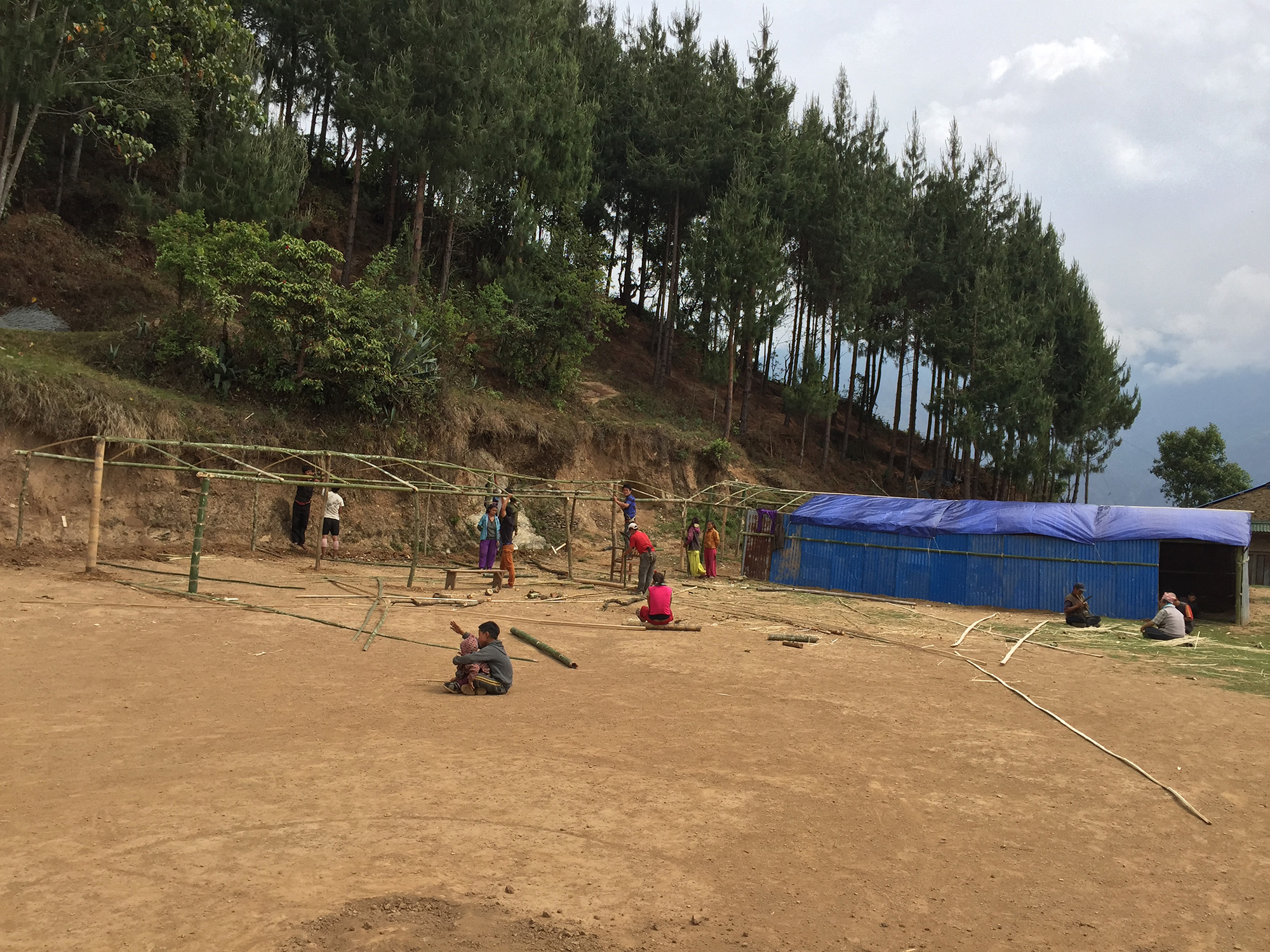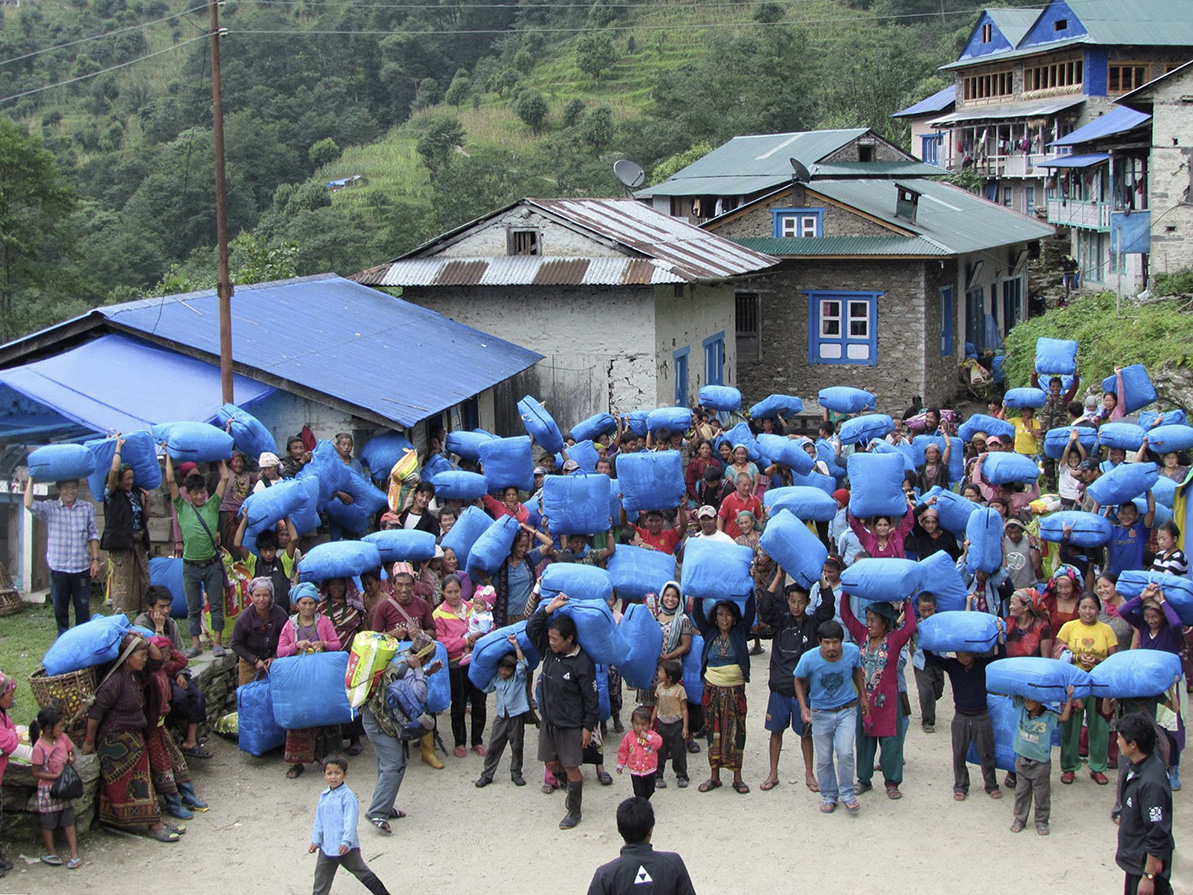A few more aftershocks, not as strong, but still bringing back the trauma of April-May; life has resumed its normal course: harvesting, working in the fields, looking after the livestock, often school under tarpaulins…
How far have we got with the Association?
Thanks to the tremendous generosity of our donors, we will be able to devote almost €40,000 over the next 3 years to continuing our work and rebuilding. First of all, public buildings, then homes, including our project for chimneys that can evacuate smoke outside, gradually replacing floor-standing fireplaces with no flue, which are a source of respiratory and eye pathologies.
We have organised a meeting on site, at the beginning of November, with representatives of other associations working in Rapcha: Nepal Foundation (USA), Classroom In the Clouds (UK), Re Help (D); four of our members will be attending.
The meeting will of course be attended by villagers, their representatives and craftspeople. The scale of the task far exceeds our capabilities, and it’s important to coordinate our efforts with other associations, while respecting the wishes expressed by local residents, which has always been our guiding principle. We will also be taking this opportunity to find out the amount of government aid and how it will actually be distributed (there had been talk of €30 to €150 per house, depending on the degree of destruction).
We explored the various possibilities for earthquake-resistant construction by approaching architecture schools (La Rochelle, Lyon, Grenoble) and organisations that have already carried out such work (Haiti, Indonesia, etc.). The most interesting techniques seem to be stones enclosed in metal gabions and, above all, bags stacked on top of each other, filled with earth, small stones or rubble. It is important to make maximum use of the debris and materials available locally, given the difficulties of access, the cost of purchase and transport (scrap metal, cement, sand, etc.) and the environmental impact. Wood is not available in large quantities and deforestation, which is a source of landslides in these very steep hills, must be avoided. The solution of building only on one storey was also adopted, but came up against the problem of land availability.
This will be the subject of our discussions, during which we will present these options to them, and our possibilities for helping them financially and technically (training, visits to sites that apply them). They will then decide, with their local craftsmen, what they feel is most appropriate, taking into account their experience, their traditions, their know-how, their priorities and their available time.
We are, of course, continuing our solidarity treks, because this is important to them and shows them that, despite the disasters that have hit it, Nepal remains a magnificent country in terms of its people and its landscapes; one group will be going there in April 2016 and another in the autumn of the same year.
We also take advantage of these treks to meet villagers, dispensary staff, teachers and the authorities. These exchanges are essential and strengthen our bonds of friendship.
Various fund-raising events are organised, including a concert in Givry (71) on 22 November, a sale of Nepalese objects in Brussels, and Christmas markets in December.
Once again, we would like to thank all our donors, who, despite the many demands made on them by current events, have shown great solidarity with our Nepalese friends.
B Simonet on behalf of ANUVAM, September 2015.
Reception of tarpaulins (August 2015)




